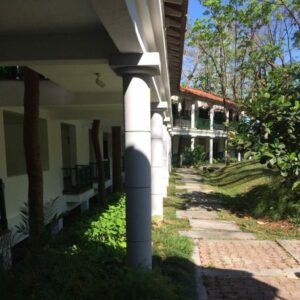[Above: Rolling Americana Survives in Today’s Cuba. Photo: Lucy Matthews.]
Relations between the United States and Cuba are changing, and have been since late 2014 when President Obama began normalizing ties.
While tourism itself is still banned, United States citizens can legally visit Cuba under twelve travel categories. My May 2016 group trip fell under the “educational activities” umbrella, and was organized by the Center for Responsible Travel (CREST) and Cuba Educational Travel (CET).
Warming relations between the US and Cuba, including expanded ways for Americans to visit, have led to a huge increase in travel to the country. It is not uncommon to hear Americans saying they want to visit Cuba “before it changes” and citizens of other countries scrambling to visit “before the Americans ruin it.”
Tourism has been a part of the Cuban economy for some time, however with large increases in US visitation, it is likely to change. With improved relations with the island nation, American tourism companies are looking for ways to put down roots in Cuba. Our visit coincided with the first journey of an American cruise ship (Carnival Fathom) coming to the island nation in more than 50 years.
At one point, we had a fascinating tourism lecture from economist Rafael Betancourt. Among many thought-provoking components of the discussion, he mentioned that due to a current lack of sufficient levels of tourism infrastructure in port cities, increases in cruise ships to the island are considered beneficial (with a floating hotel, increased visitor numbers don’t have to mean an accommodation overflow).
As visitation to Cuba increases, there are some who are concerned about what form this tourism might take.

A positive example of ecotourism was Hotel Moka Las Terrazas, where we stayed in the mountains our first night in the country. It is an ecolodge created to exist in harmony with nature and to bring visitors to the small community of Las Terrazas, where inhabitants aim to live in balance with the environment. To achieve this aim, many residents help with reforestation projects. The community benefits from Hotel Moka because tourists visit the local shops, restaurants, and cafés.
Another form of tourism held up as a positive example was that of “casas particulares.” Similar to Airbnb, casas particulares are often structured as visitor housing in a separate section of the owner’s permanent residence. We spent a few days in casas particulares in the town of Viñales. This was a great way to spend more time with local Cubans, to eat home-cooked meals and to experience an approximation of day-to-day Cuban life.

The task ahead for Cuba is to figure out how tourism can benefit rather than overwhelm or commercialize the island nation. From what we heard on the trip, there does seem to be interest in managing Cuban tourism in order to maintain what makes Cuba “Cuban,” however there didn’t seem to be a high level of coordination around this aim.
What Cuba I will see if I return in 10 years? Today’s visitors who say they want to see the island before it changes—likely picturing those elements of island life that are remnants of the 1950’s—are probably right: The island will change. This doesn’t have to be a bad thing. If change is managed properly, tourism can do what it does best: highlight a distinctly Cuban sense of place and be an economic driver and catalyst for cross-cultural exchange. If left to a mass-touristic model, the Cuba I visit in 10 years may more closely resemble Miami than Havana.
